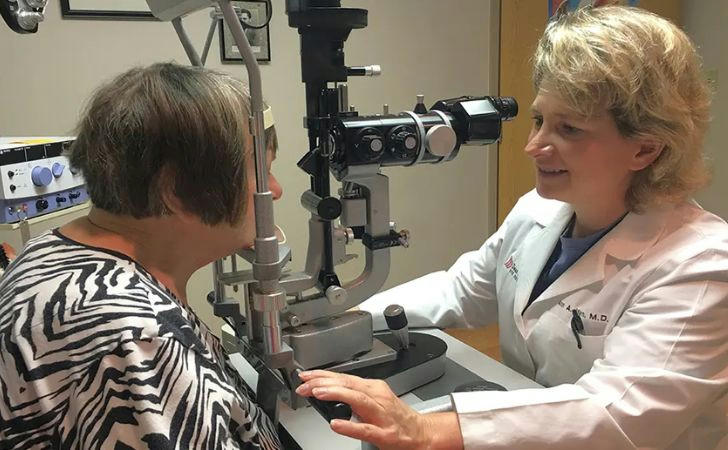The Vision Public Services Program
Eye care appointments, a public service program of the American Academy of Ophthalmology, provide eye exams to uninsured and underinsured individuals 65 and older. View eye care appointments near you.

Exciting change! On April 7, the minimum age will be lowered to 18.
How to Apply for Eye Care America
- Answer a few questions about yourself or on behalf of someone else and get answers instantly.
- If the results show that you have been matched with a doctor in your area, you will receive an email with the phone number of the volunteer office to schedule an appointment.
- Be sure to review what is covered under the program in the section below called "What should I expect if you qualify?"

Note: Your information will be used to match you with an eye doctor in your area. Your information will only be shared with the EyeCare America office to which you were referred. Your information will never be sold.View eye care appointments near you
Eye Care Services Available
- Comprehensive Eye Exam: Includes vision testing, eye pressure measurement, and fundus examination to assess overall eye health.
- Eye Disease Management: Diagnosis and treatment of various eye diseases, such as glaucoma, cataracts, macular degeneration, and diabetic retinopathy.
- Prescription Glasses and Contact Lenses: Provides appropriate eyeglass or contact lens prescriptions based on the results of the exam.
- Contact Lens Fitting: Provides professional fitting services for patients who need to wear contact lenses.
- Surgical Services: Includes laser surgery (such as LASIK), cataract surgery, and other eye surgeries.
Eye Exam Items
- Visual Acuity Test: Evaluates the clarity of a patient's vision, usually using an eye chart.
- Refraction: Determines whether glasses or contact lenses are needed and evaluates nearsightedness, farsightedness, and astigmatism.
- Visual Field Test: Checks the range of vision and identifies potential vision problems.
- Slit Lamp Exam: Uses special equipment to examine the front structures of the eye, including the cornea, iris, and lens.
- Tonometry: Measures the pressure inside the eye to screen for glaucoma.
- Fundus Examination: Dilates the pupil to see the health of the retina and optic nerve.
- Color Vision Test: Checks the patient's color recognition ability to evaluate for color blindness or other color vision problems.
These services and examinations are designed to ensure eye health and to detect and treat potential eye diseases.
The Importance of Eye Care for Seniors
Adults over 40 are at the highest risk for eye disease. Seniors 65 and older are at even greater risk for eye disease. Vision loss affects more than just your eyes. It can also increase the likelihood of social isolation, falls and accidents, chronic health problems, and depression.
Many health conditions that affect vision are treatable and manageable if treated early. This makes regular eye care even more important for seniors.
Common Age-Related Vision Problems
Cataracts: When proteins in the lens of the eye begin to break down and clump together, the lens becomes cloudy. The most common cause of cataracts is aging. Symptoms include:
- Light sensitivity
- Blurred vision
- Problems with night vision
- Haloes around lights
- Colors become muted
Cataracts can be treated quickly and safely with surgery to replace the cloudy lens with an artificial lens (IOL). This surgery is 90% effective.
Age-Related Macular Degeneration (AMD): AMD blurs central vision by affecting the macula. It is the leading cause of vision loss in people over 50. There is no direct treatment for AMD, but ways to slow its progression include:
- Not smoking
- Eating a healthy diet that includes fish and leafy green vegetables
- Keeping cholesterol and blood pressure within a healthy range
- Getting regular exercise
Glaucoma: This disease often has no early symptoms or warning signs, but it can damage the optic nerve. Glaucoma is the second leading cause of blindness worldwide and the leading cause of blindness in older people. Risk factors include:
- Age (over 40)
- Family history of glaucoma
- Diabetes
Regular eye exams and medications can help manage glaucoma.
Dry Eyes: A common, chronic condition that occurs when tears don't lubricate the eye properly. Symptoms include:
- Burn or eye irritation
- Red eyes
- Blurred vision
- Light sensitivity
- Watery eyes
Treatment options include artificial tears and measures to increase tear production.
Regular eye care is essential for maintaining vision and overall health, especially for seniors.
